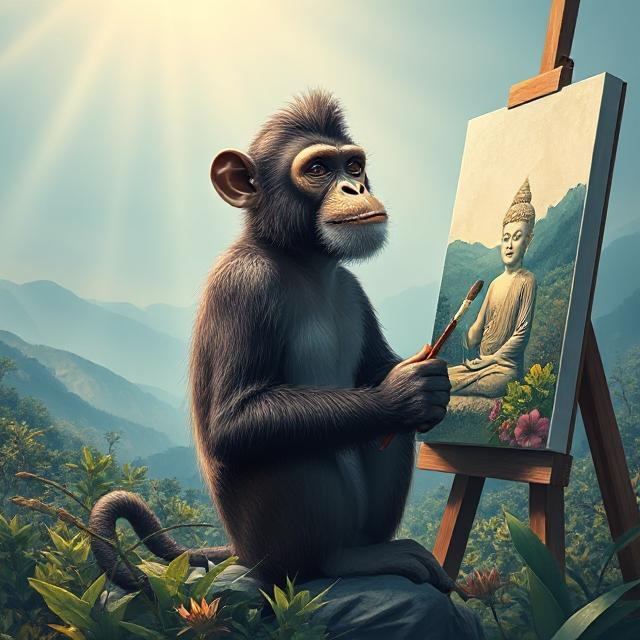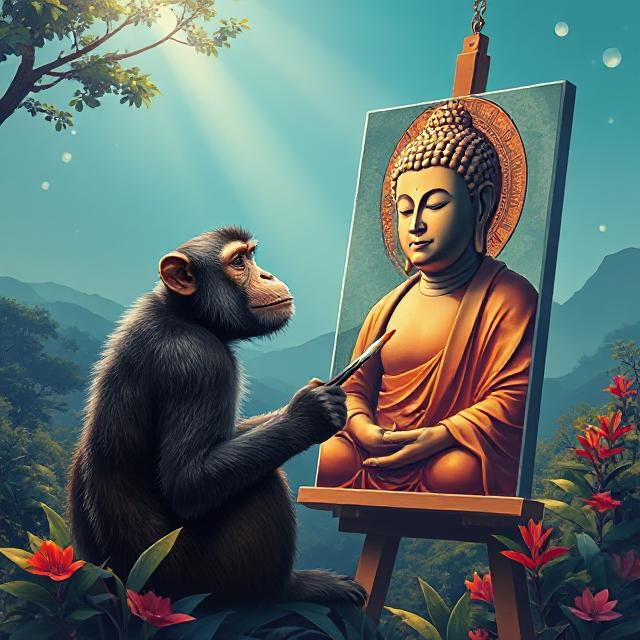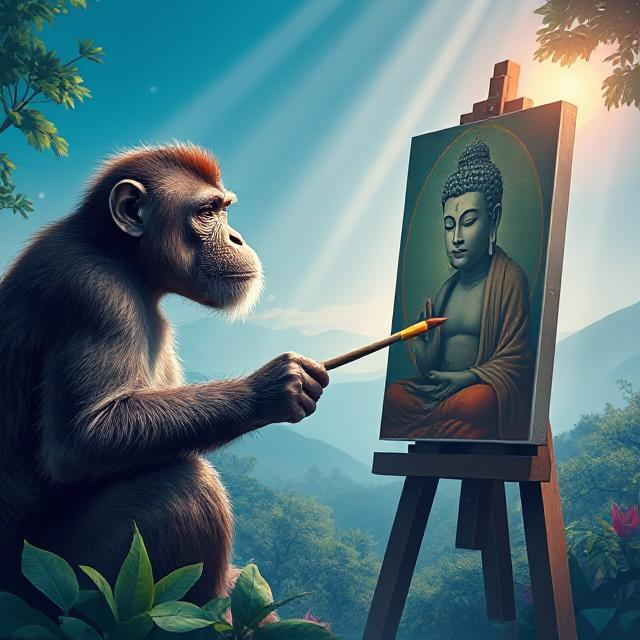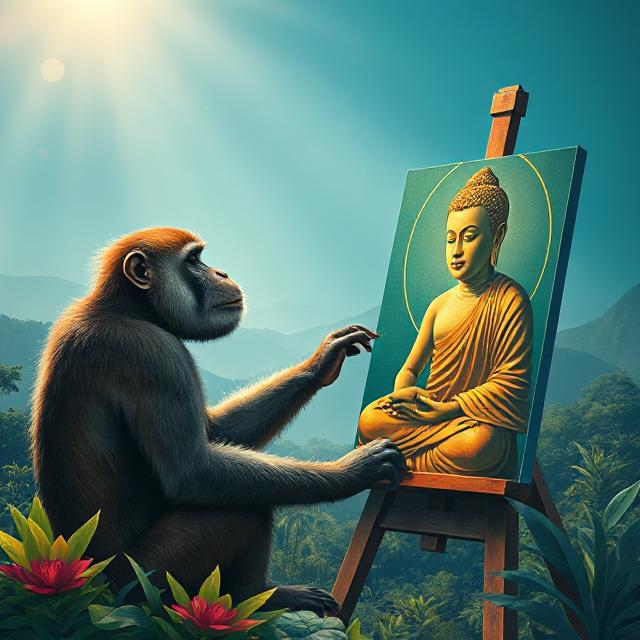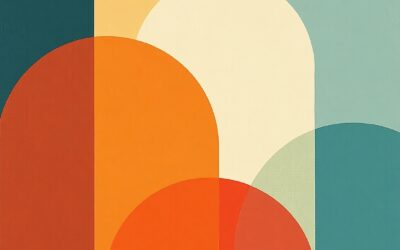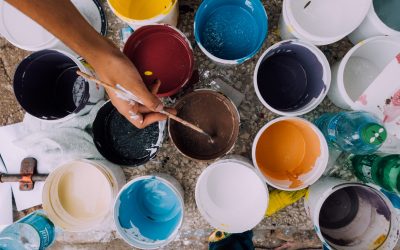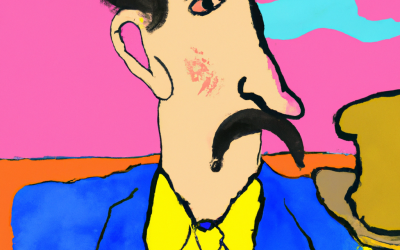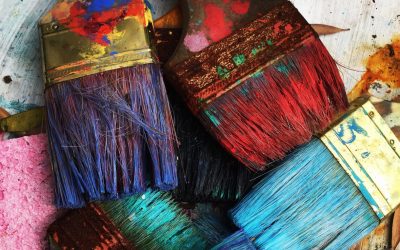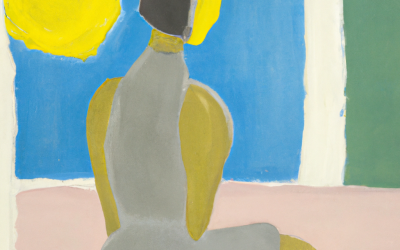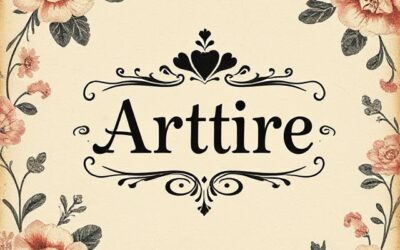Let’s not beat around the (bamboo) bush: meditation is great. It’s calming, centering, and makes you feel just a little less like a caffeinated squirrel on rollerblades. But if you’ve ever tried sitting still on a cushion with your eyes closed and your brain screaming about unfinished laundry, you know meditation doesn’t always feel accessible (unless you are really serious about your meditation practice, but that’s another story…).
Enter: painting. The sneaky, brush-wielding cousin of mindfulness. The one that lets you stay sort-of busy while achieving an eerie state of inner stillness. The question is: is painting really a form of meditation, or are we just justifying our desire to stay in the studio and avoid doing our taxes?
Let’s explore.
🧘♀️ What Is Meditation, Anyway?
Before we go all Bob Ross on this, let’s define our terms. Meditation isn’t just sitting cross-legged and chanting (though if that’s your thing, chant away). It’s a practice of focused attention, presence, and non-judgmental awareness. It’s like telling your brain, “Shhh. We’re just going to breathe and observe, okay? No spirals today.”
That’s the textbook version.
The actual experience is more like, “Am I doing this right? Is this enlightenment or am I just hungry?”
Which brings us to painting…
🎨 Painting: The Gateway Drug to Mindfulness
Have you ever been so deep in a painting session you forgot time, hunger, and possibly the existence of socks? Congratulations. You’ve met flow state — meditation’s wild and wonderful sibling. When the brush moves almost without thought, and the colors pull you in like a hypnotic whirlpool, you’re meditating, baby. With acrylics.
-
You’re focused (on texture, color, light).
-
You’re present (because who has time for existential dread when you’re fixing that one annoying shade of green?).
-
You’re aware (but in that fuzzy, all-is-well way).
It’s a full-on mindfulness retreat, minus the herbal tea and judgmental silence.
🙃 But What About When Painting Is a Nightmare?
Oh yes. We’ve all had those days. You start painting, and suddenly you’re not channeling divine inspiration — you’re just fighting mud on canvas while berating your life choices.
Guess what? That’s meditation, too.
Meditation doesn’t mean peaceful. It means present. And what’s more present than watching your inner critic launch a full-blown monologue while you stare at a canvas that looks like a raccoon did finger painting?
If you can observe the meltdown without chucking your brushes across the room, you’re doing it right.
(And if you do chuck your brushes — hey, catharsis is meditative too. Let it out.)
🧠 Neuroscience Agrees
Scientists — those curious lab-dwellers who make mindfulness sound fancier — have studied this. Engaging in creative activities like painting:
-
Reduces cortisol (that pesky stress hormone),
-
Activates the default mode network (hello, introspection),
-
Enhances alpha brain waves (a.k.a. the chill zone).
It’s the same brain pattern seen during traditional meditation. So yeah, your painting practice might be more Zen than your 6 AM yoga class. Just saying.
🖌️ The Brush Is Mightier Than the Mantra
You don’t have to choose between meditating and painting. Why not both? But if the idea of traditional meditation makes your skin itch, know that your creative practice counts.
That rhythmic motion of brush to canvas? The way time slips sideways while you chase color and form? That’s your nervous system going, “Ohhh, thank you.”
Painting can be a devotional act. A prayer in pigment. A quiet conversation with something bigger than you — even if it’s just your higher self saying, “Wow, we’re finally not overthinking things.”
✨ So, Is Painting a Form of Meditation?
Yes. A thousand times yes.
But not always the blissed-out, lotus-flower kind.
Sometimes it’s messy, sometimes it’s frustrating, and sometimes it involves a lot of staring at walls. But if you’re present, curious, and just a little willing to surrender to the process — congrats. You’re meditating with your hands.
Now go make something. Or stare into space and observe your breath with a brush in your mouth. Either way, you’re doing the work.

